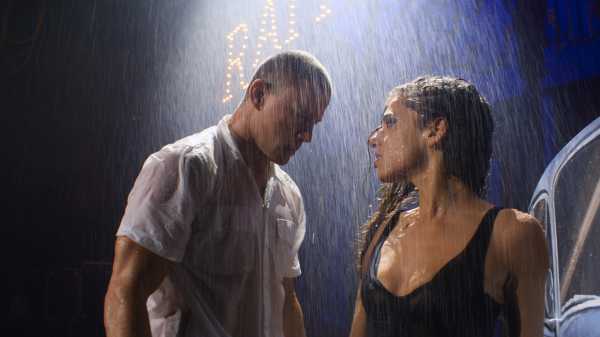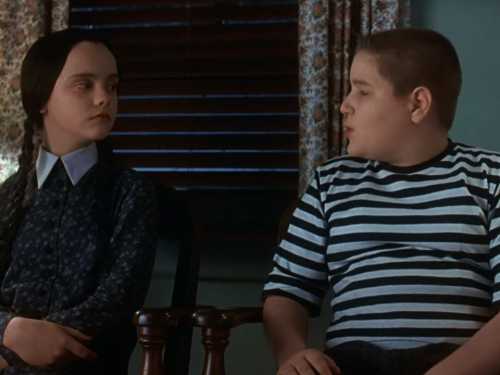
In 2012, when Steven Soderbergh and Channing Tatum released “Magic Mike,” a moist, underlit caper about male entertainers at a Tampa strip club, they thought they were making an indie. Instead, the film grossed a hundred and sixty-seven million dollars, spawning an international franchise. Starring Tatum as a dancer who dreams of opening a furniture business, the film also laid out a surprisingly wholesome theory of the art of male striptease. Mike’s liberatory gyrations, which spread delight and empowerment wherever he slithers, became the basis for a sequel, “Magic Mike XXL”; a live stage show with runs in Las Vegas, Miami, London, and Berlin; and an unscripted HBO series, “Finding Magic Mike.” The final installment of the film trilogy, “Magic Mike’s Last Dance,” opens Friday.
“Magic Mike” is about capitalism. A thong is perhaps the least undignified costume that Tatum’s character, a six-year veteran of the Xquisite Male Dance Revue, dons to make ends meet: when he’s not at the club, he straps on a tool belt to lay roofing tile in dangerous heat, perches glasses on his nose to angle for a small-business loan, and keeps his dashboard dressed in protective plastic so that his car can be resold. His is a wincing, genuine precarity—the guy has a heart of gold, but calls sociology “social studies.” In the club, though, he’s king. The first film portrays the world of male stripping with a buoyant intimacy, through the lens of a dancer’s memory. (Tatum worked as a stripper when he was eighteen, and his experience inspired the script.) The men bitch about who choreographs their solos and hunch over sewing machines, repairing torn costumes. Mike would like to do something more worthwhile and lucrative, but he can’t. Although you cheer when he quits the show at the end of the first film, and at the end of the second, you don’t really blame him for coming back. Dancing does something to him that is potent and undeniable. The economics of the work is degrading, but the work isn’t: he goes onstage tense and comes off relaxed, covered in sweat.
And then there’s the dancing itself. The actual dances in the first two films are silly: Mike and his colleagues march in place, drop for pushups, flash their derrières, and do machine-gun gestures from their groins. The franchise’s head choreographer, Alison Faulk, stays true to the source material, letting the characters’ investment in the steps gently and comically trump their aesthetic merit. (In an oral history, the films’ costume designer recalled how Matthew McConaughey, who plays the Revue’s libidinal director, suggested that his character be dressed like he “thinks he’s Baryshnikov. But let’s do it like it’s Fire Island 1974.”)
But good dancing is good dancing anywhere; bad steps can even serve to highlight a good mover, like a seasoned actor reworking bad lines. I remember vividly when I first saw a leaked video, in Us Weekly, of Tatum stripping as an eighteen-year-old. I don’t remember much about the choreography or the nudity. What I remember is the way that Tatum used his socks. The best onscreen dancing immortalizes the way that a virtuosic body interacts at close range with everyday objects: a raincoat, a chair, a stool, a hat. It’s what happens in “Singin’ in the Rain” when Gene Kelly hops backward over a bar in unison with Debbie Reynolds and Donald O'Connor, and the heel of his shoe—or maybe part of his pants, we can’t quite see—catches the edge of some fringe on a stool and makes it swing. The way Tatum slipped and gripped his way around a stage with those socks had the same quality: the combination of practicality, economy, and surprise that is the mark of every great screen dancer. You can see it in his first dance movie, 2006’s “Step Up,” when, crossing the stage toward Jenna Dewan, he takes just a moment—out of rhythm, yet at just the right time—to hike up his pants. Or, in “Magic Mike,” when he lets his top hat fall and skitter down the runway as he worms across the floor.
In film, dance tends to free characters from the strictures of social expectations, upending racial or class barriers in the process. In the “Magic Mike” films, dance makes women feel good about being horny for men’s bodies. The men are bewildered by this, yet enjoy it; in the world onscreen, there is nothing harmful, invasive, or uncomfortable about the fevered exchange of fives and ones. The men are dealing with an alien yet positive force—“a zombie apocalypse of repressed desire,” as Mike puts it. In “Magic Mike XXL,” a frothy tale of a road trip to a stripping convention, the members of the Xquisite Male Revue are given more elaborate backstories, and even more stage time; instead of muscle spasms and crooked string lights, we get classic movie-musical numbers. “Magic Mike’s Last Dance,” which was inspired by the making of the stage show, finds Mike washed up again, working as a cater waiter who occasionally gets recognized by women from his past. (“Were you a . . . cop?” one smirks, as he fixes her a drink.) After working a charity event, Mike gets propositioned for one last lap dance by a socialite played by Salma Hayek, who has recently split from her wealthy husband. Impressed, she whisks him off to London to develop his own act.
That stripping can be an art form is taken as self-evident by the professionals auditioning for Mike’s show, as they meld slick gyrations with pirouettes and breakdancing. But Mike must still teach them a thing or two about intimacy, which doubles, in the film, as a way to showcase Tatum’s undiminished ability to use his body to connect with another person, in front of a camera, with warmth and a sense of privacy. Interrupting one of the taut ballet dancers cast for the show, which Hayek believes will inspire the world’s “numb, disconnected” audiences with “a wave of passion,” Tatum illustrates the difference between a technically proficient thrust and “keeping a connection.” This means—well, I don’t know what it means, but you can see the subtle incorporation of whatever it is, some quality that exceeds and undoes the technical. It’s what makes Tatum a star. “You don’t even have to dance as much,” he observes.
No matter the context, dancers’ bodies are stories of comportment, and thus of class. Of his own style, Gene Kelly said, “I didn’t want to move or act like a rich man. I wanted to dance in a pair of jeans. I wanted to dance like the man in the streets.” His way of moving was grounded and explosive; Fred Astaire’s was elevated, aristocratic, and cool. Both men, however, were studio-trained obsessives. During the “Step Up” press tour, Tatum told interviewers, “I never did any kind of class whatsoever.” In “Last Dance,” he moves like a souped-up car: sleek, low to the ground, capable of great speed. If he has a signature move, it is the body roll, the kind you can perfect in a bathroom mirror. In his “Step Up” screen test, Dewan, who had recently toured as a backup dancer with Janet Jackson, compliments him, but Tatum demurs. “I don’t do them steps,” he says. “I just kind of make it look like I do.”
Tatum’s body is a familiar symbol in the era of the nationwide-talent-search and dance-contest reality show: a spectacle of flamboyant heterosexual vulnerability, hidden, in plain sight, in the working class. But the “Magic Mike” movies are less interested in class mobility than in authenticity. If stripping is about cosplaying a sailor or soldier, then dancing is about shedding stratified professional identity. (“I never wanted to be in the navy!” one stripper, Tito, crows.) Traditionally, in dance movies, a man who discovers dance also discovers either his baser self or a secretly virtuosic one; dancing enables or forecloses his entry into the élite. In “Magic Mike,” working-class bodies don’t transcend hierarchies so much as pleasantly confuse them, in the name of individual expression. One of the standout moments in “Magic Mike XXL” arrives when Richie (Joe Manganiello), a stripper disillusioned with his fireman routine, performs an impromptu snack-aisle seduction for a convenience-store clerk. Without his costume, he dances with effort, splaying his hands and furrowing his brow, and awkwardly mouthing along to the Backstreet Boys’ “I Want It That Way.” His props are Cheetos and a bottle of Aquafina; his moves are enthusiastic, sweet, and flawed. It’s a kind of rebirth. “I’m not a fucking fireman!” Richie says. “I’m a fucking male entertainer.” Mike agrees. True creativity is “not even about being a dancer!” he says. “It’s about being you.”
Although “Last Dance” features frequent voice-overs about dance’s mysterious, ancient origins, its pleasures are rooted in small moments like these, where spectacle gives way to self-acceptance. The film ends with nearly thirty minutes of dance numbers, including a ten-man version of Tatum’s famous routine to Ginuwine’s “Pony,” a Busby Berkeley-esque sequence in which muscled performers spill down a double staircase in waves, and a silky contemporary-dance solo. At the climax, Tatum performs a complex, erotic duet in about six inches of water with the American ballerina Kylie Shea. The guy pulls out all the stops. The choreography, filmed in closeup, makes a case that the most charged and intimate view of an American male is a pair of aging knees in dancer’s knee pads, accompanied by large, slightly hairy thighs and unglamorous feet. Watching it, I felt a sense of discipline, danger, and visceral bliss. ♦
Sourse: newyorker.com






